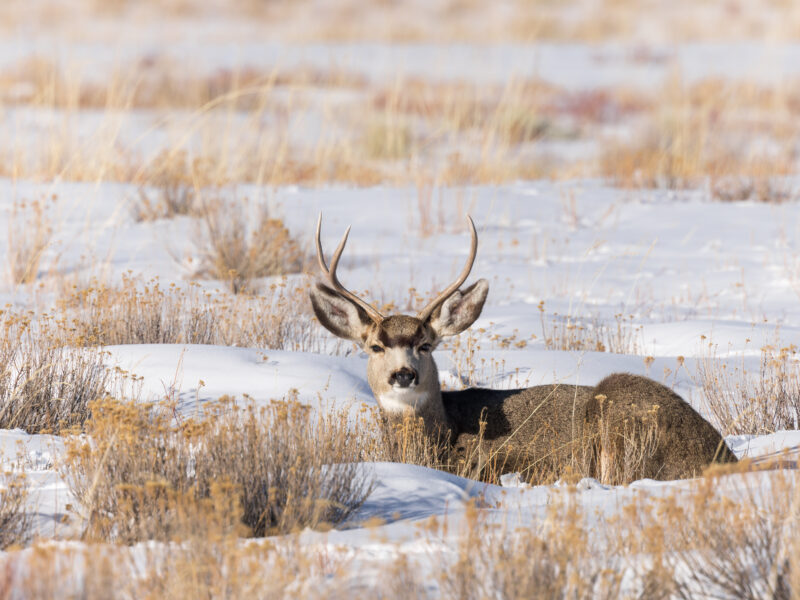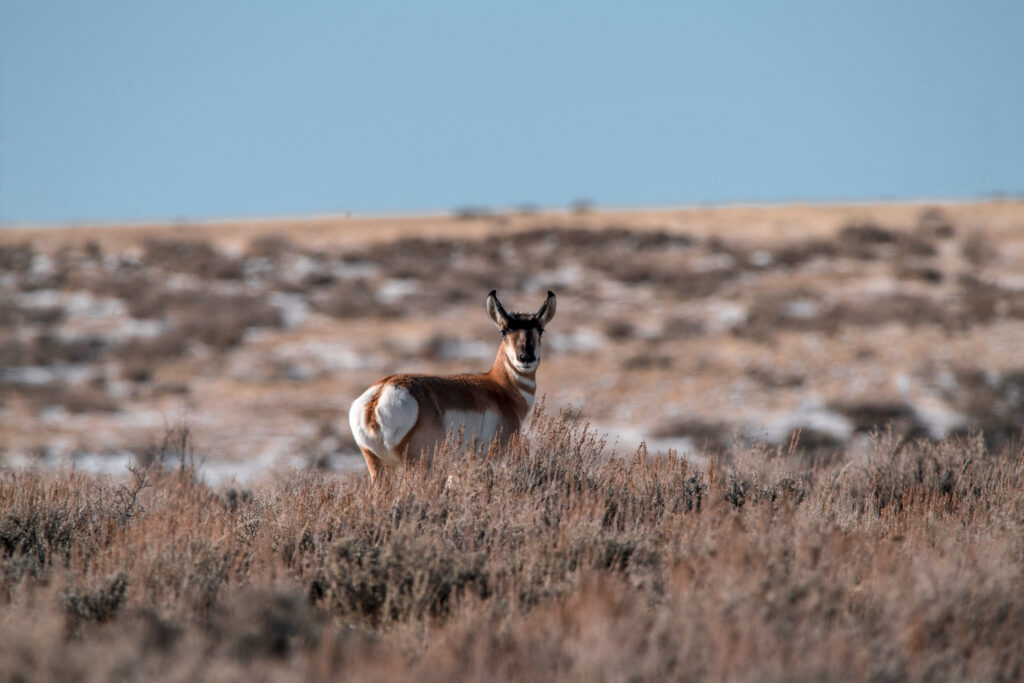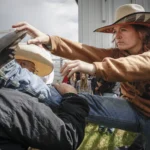Hunters Finding Limited Quarry This Fall
State’s summer predictions about mule deer, other species playing out across Wyoming
- Published In: Other News & Features
- Last Updated: Oct 22, 2023

Mule deer herds around Wyoming were decimated by the harsh winter of 2022-2023, prompting officials to trim the number of tags allowed this hunting season. (Photo courtesy from the Wyoming Game & Fish Department)
By K.L. McQuaid
Special to the Wyoming Truth
Dire predictions about the potentially devastating impact last winter’s severe weather could have on fall hunting appear to be coming true in parts of Wyoming where harvesting season has begun.
Hunters and wildlife officials alike said they have seen fewer animals on the landscape thus far, especially in western and north-central Wyoming.
“In the southwest part of the state, especially, people are noting that there’s a significant lack of animals as compared to previous years,” Doug Brimeyer, deputy chief of wildlife in the Wyoming Game & Fish Department’s Wildlife Division, told the Wyoming Truth.
“We’re hearing from hunters that there’s a decided lack of deer,” he added. “In some local areas, the impact of the weather conditions and other factors has been significant. We’re seeing the same trend with pronghorn.”
In response to the harsh winter and subsequent winterkill that caused populations to dwindle, Wyoming and several other Mountain and Great Plains states – Colorado, Nebraska and North Dakota among them – slashed hunting tags for mule deer and pronghorn for this season.

Wyoming cut 4,410 mule deer tags and 10,290 pronghorn licenses in mid-April in the hope of conserving the species and allowing it a chance to recover.
Even so, in some parts of the state where a shortened hunting season began on Oct. 1, animals have been scarce.
“Many areas of western Wyoming, some of the most hunted areas, opened and closed after only six days, one of Game & Fish’s mitigating efforts at helping the deer population,” said Joshua W. D. Coursey, president and chief executive officer of the Muley Fanatic Foundation, a Green River-based hunting and conservation group.
“And from what I saw and heard, they had good reason to do what they did,” Coursey added. “I spent four of the six days out there, and I did not find a single buck that I would legally have been able to hunt. I also talked to several other folks, and they said the same: The deer are just not on the landscape.”
Other regions of Wyoming are also experiencing negative effects from last winter, which was one of the coldest seasons in the state in three decades.
“If anything, it appears as if conditions are worse than they were predicted to be in the north and north-central parts of the state,” said Mark Kayser, a Sheridan-based hunter, outdoor writer and photographer. “Especially for mule deer, the numbers don’t look good. People used to report this time of year seeing herds and herds, and they’re not seeing any now.”
Conditions for hunting in eastern Wyoming and the Black Hills, among other areas, won’t be known until season opens there during the last week of October and early November, respectively.
Mule deer decline prompts study
Even without the harsh winter of 2022-2023, mule deer have been on the decline in Wyoming for the past several years, the result of Chronic Wasting Disease, predation and other factors.
Between 1990 and the mid-2010s, Wyoming’s mule deer population fell by nearly one-third, according to state figures.
That decline has also been seen in annual harvests. In 2016, about 29,300 mule deer were harvested. Last year, that figure dropped to about 17,590, Wyoming Game & Fish Department records show.
To gain a better understanding of the overall population, in late 2022 the Game & Fish Department teamed with the University of Wyoming and the Wyoming State Veterinary Lab on a five-year research project to study mule deer herds in areas they frequent: the Wyoming Range, Laramie Mountains, North Bighorn, Sweetwater and Upper Shoshone.
In each area, officials attached tracking collars to 210 deer – 80 does, 30 bucks and 100 juveniles at least six months of age.
On the Wyoming Range, all 100 juveniles the department collared died during the winter. The Sweetwater herd, near Jeffrey City in Central Wyoming, also lost over 60% of its juveniles.
The North Bighorn and Laramie Mountains herds fared much better. Roughly 89% of the west side of the North Bighorn does survived the winter, as did 81% of its juveniles. In the Buffalo and Sheridan areas, juvenile mortality was 35%.
In the Laramie Mountains, 30% of the collared juvenile mule deer died, but just 21% and 14% of does and bucks failed to make it to Spring.
Game & Fish Department officials plan to collar more deer next month to maintain sample sizes in herds, and they hope to learn more about why herds in the eastern part of the state fared better than in western areas.
“Some people were frustrated with the cuts we made in April,” Brimeyer said. “But with what we know now, I feel pretty comfortable with where we ended up regarding the tag cuts for mule deer.”
Elk, whitetail and hope
Although mule deer suffered under the savage winter, other species managed to not only survive, but thrive.
“People are seeing a lot of elk, and there’ve been some very good hunting opportunities,” Brimeyer said.
Kayser and Coursey agreed.
“The elk numbers still appear to be pretty good,” Kayser said. “A lot of folks I talked to in archery season said they were pleased, but it’s understandable. Elk are more adaptable than mule deer, white tail or pronghorns. They can cover more ground and move to new places if an area is inhospitable to them.”
“Elk seem to be doing great,” Coursey said. “But they’re very resilient. Whitetail hunting has also been very good, from what I hear.”
In trimming mule deer tags for 2023, the state elected to issue 1,475 additional whitetail licenses, based on that species’ population estimates.
“We’re seeing horn and antler growth, that looks good,” Brimeyer said. “Pronghorn seem to have a good layer of fat, and many elk and deer do, too. That nutritional capacity will help them going forward, and we’ll continue monitoring them. For now, I’m optimistic.”
Mostly, though, hunters and wildlife officials alike hope that the coming winter isn’t a repeat of the last one.
“Recovery will take a lot of time, and until then, we just have to hope that Mother Nature is kind to us,” Coursey said.
“Last year was the worst winter we’ve had in at least 20 years,” Kayser said. “But Mother Nature is cyclical. Things should come back. We just may need to sit out or pare back for a year or two.”













